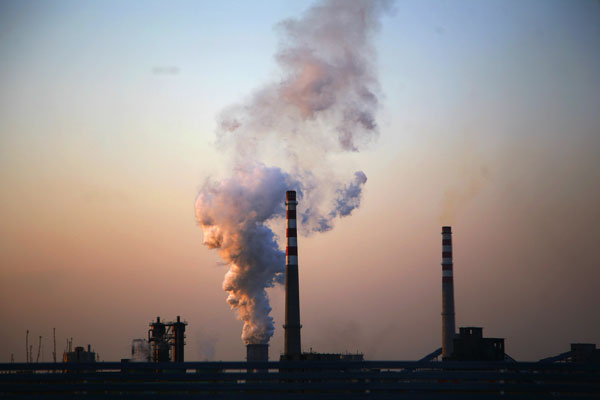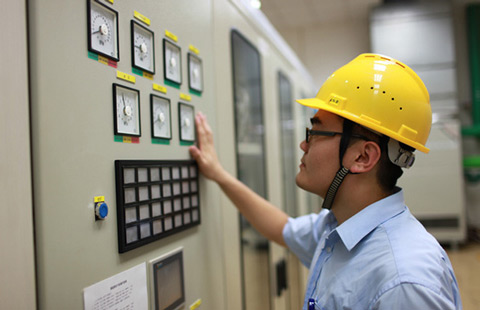China's carbon growth rate in decline: report
Updated: 2015-07-14 07:37
(Xinhua)
|
||||||||
 |
|
Smoke billows from a factory in Dezhou, Shandong province. [Provided to China Daily] |
LONDON - Despite the continued increase in global carbon emissions in China, the growth rate of carbon emissions has been "in a steady decrease" since 2005, and was near zero in 2014, according to a new climate report released Monday.
The report, commissioned by Britain's Foreign Office, was written by experts from Britain, China, the U. S. and India. It gives a detailed assessment of the progress made in reducing carbon emissions, and various threats posed by global warming.
Several factors have played key roles in bringing down the carbon growth rate in China, including better energy efficiency in major sectors, development of renewable energy, and concern for air pollution, the report said.
By the end of 2014, China's energy intensity had decreased by about 30 percent from the 2005 level, and "the national average efficiency of all power plants is now rising to among the best in the world," according to the report.
Meanwhile, China is now leading the world in investing in renewable energy, contributing a quarter of the world total, the report also said. Taking solar power as an example, experts predicted that China is likely to overtake Germany to become the largest developer of solar power in the world by the end of 2015.
Another noticeable factor is that China's concern for air pollution has helped to "set a cap for coal consumption in key regions, which will eventually extend to the whole country," according to the report.
The Chinese government is fully aware of the challenges, and is very keen to have a detailed analysis of the impact of climate change, said Prof. David King, the leading author of the report and Britain's climate change envoy.
China has recently announced its plans to cut carbon dioxide emission per unit of GDP by 60 to 65 percent from the 2005 level by 2030.
Last year, China signed a bilateral agreement on climate change and clean energy cooperation with the U. S., promising to achieve the peaking of carbon emissions around 2030, make best efforts to peak early, and increase the share of non-fossil fuels in primary energy consumption to around 20 percent by 2030.
If these goals are achieved, it opens the possibility that economies of scale will bring down the cost of non-fossil technologies, enabling them to become more widely used in the rest of the developing world, the report said.

 Beijing roasts in high temperature
Beijing roasts in high temperature
 The world in photos: July 6-12
The world in photos: July 6-12
 Djokovic downs Federer to win third Wimbledon crown
Djokovic downs Federer to win third Wimbledon crown
 Top 10 Chinese companies by profit margin in 2015
Top 10 Chinese companies by profit margin in 2015
 No room in the pool
No room in the pool
 Top gaokao scholars saddle up for a ride in the park
Top gaokao scholars saddle up for a ride in the park
 Girl who shoots straight with bow and arrow
Girl who shoots straight with bow and arrow
 Ten photos you don't wanna miss - July 10
Ten photos you don't wanna miss - July 10
Most Viewed
Editor's Picks

|

|

|

|

|

|
Today's Top News
Pentagon tones down on China threat
Hillary Clinton calls for higher wages for everyday Americans
A day in the life of Muslims during Ramadan in NW China
China's carbon growth rate in decline: report
Mexico: Drug lord 'El Chapo' Guzman escapes, manhunt begins
Lawyers held for 'trying to influence verdicts'
Top court official under inquiry for graft
It is wrong to label illegal immigrants refugees: Opinion
US Weekly

|

|






